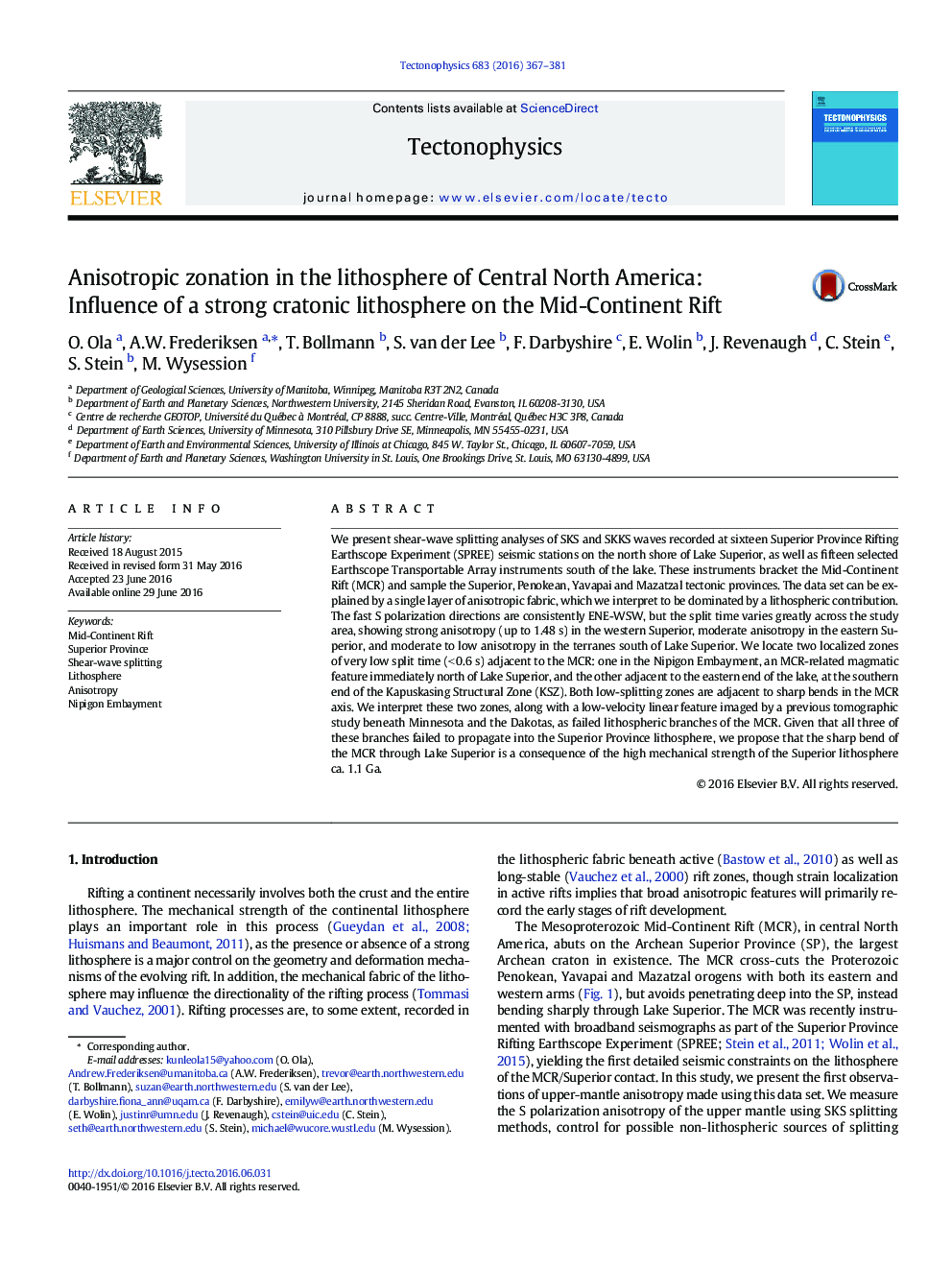| کد مقاله | کد نشریه | سال انتشار | مقاله انگلیسی | نسخه تمام متن |
|---|---|---|---|---|
| 6433394 | 1636715 | 2016 | 15 صفحه PDF | دانلود رایگان |
- Shear-wave splitting measurements from a new dataset in central North America.
- Major variations in split over short distances attributed to lithospheric domains.
- Two zones of weak anisotropy adjacent to Lake Superior.
- Weak-split zones attributed to failed lithospheric branches of Mid-Continent Rift.
- May indicate that strong Superior lithosphere blocked northward MCR propagation.
We present shear-wave splitting analyses of SKS and SKKS waves recorded at sixteen Superior Province Rifting Earthscope Experiment (SPREE) seismic stations on the north shore of Lake Superior, as well as fifteen selected Earthscope Transportable Array instruments south of the lake. These instruments bracket the Mid-Continent Rift (MCR) and sample the Superior, Penokean, Yavapai and Mazatzal tectonic provinces. The data set can be explained by a single layer of anisotropic fabric, which we interpret to be dominated by a lithospheric contribution. The fast S polarization directions are consistently ENE-WSW, but the split time varies greatly across the study area, showing strong anisotropy (up to 1.48Â s) in the western Superior, moderate anisotropy in the eastern Superior, and moderate to low anisotropy in the terranes south of Lake Superior. We locate two localized zones of very low split time (<Â 0.6Â s) adjacent to the MCR: one in the Nipigon Embayment, an MCR-related magmatic feature immediately north of Lake Superior, and the other adjacent to the eastern end of the lake, at the southern end of the Kapuskasing Structural Zone (KSZ). Both low-splitting zones are adjacent to sharp bends in the MCR axis. We interpret these two zones, along with a low-velocity linear feature imaged by a previous tomographic study beneath Minnesota and the Dakotas, as failed lithospheric branches of the MCR. Given that all three of these branches failed to propagate into the Superior Province lithosphere, we propose that the sharp bend of the MCR through Lake Superior is a consequence of the high mechanical strength of the Superior lithosphere ca. 1.1Â Ga.
Journal: Tectonophysics - Volume 683, 30 June 2016, Pages 367-381
